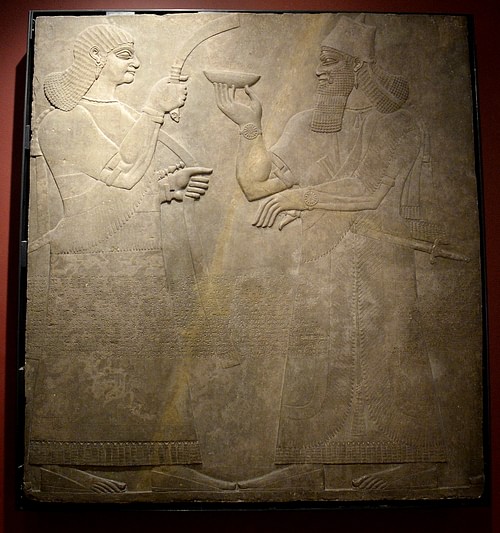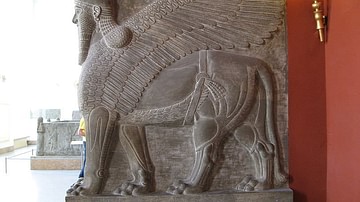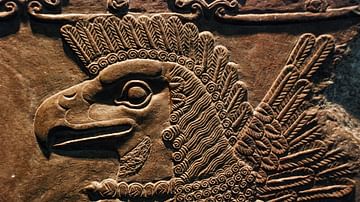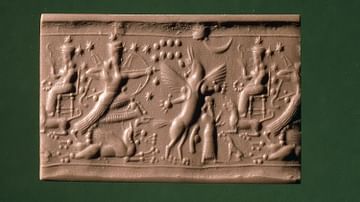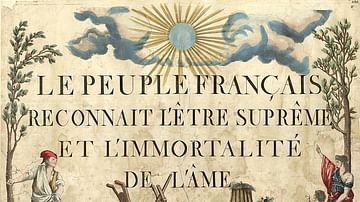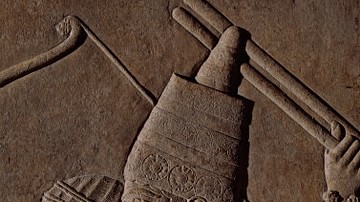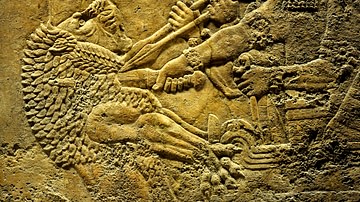The greatest party ever thrown in antiquity is the inaugral event thrown by Ashurnasirpal II (r. 884-859 BCE) in 879 BCE at the completion of his new city of Kalhu which was attended by almost 70,000 people who were served, among other treats, over 10,000 measures of beer and 1,000 oxen.
The kings of the Neo-Assyrian Empire (912-612 BCE) have long been considered some of the most ruthless monarchs in ancient history. At the same time they were sacking cities and slaughtering those who rebelled against them or resisted conquest, however, they often pursued gentler interests. Sennacherib (r. 705-681 BCE) enjoyed gardening, loved flowers, and sponsored public parks. His son, Esarhaddon (r. 681-669 BCE) was more interested in building projects than military conquest, even as he campaigned against Egypt.
His son and successor, Ashurbanipal (r. 668-627 BCE), is probably better known today for his impressive library and efforts to preserve literature and culture than for any of his military campaigns. This same pattern can be seen in earlier kings of the empire as well and is epitomized in an event that could be considered the greatest party ever thrown.
Ashurnasirpal II, the third king of the Neo-Assyrian Empire, set the standard for this dichotomy between iron-fisted rule and aesthetic pursuits when, in 879 BCE, he hosted a grand party for his subjects to celebrate the completion of his new city of Kalhu (also given as Caleh, Calah, and Nimrud) and the inauguration of his new palace there.
He invited the whole country to attend and 69,574 people accepted, including the 16,000 new citizens of Kalhu and 5,000 dignitaries from his own territories and foreign lands. While scholars have suggested that the festival may have served the king as a public relations gesture, he certainly did not need to go to the trouble as he was already widely feared and respected. It is far more likely that Ashurnasirpal hosted his grand affair simply because he wanted to and left records of it so that future generations might read them and wish they could have attended.
Ashurnasirpal II's Background & Campaigns
Ashurnasirpal II was the son of Tukulti-Ninurta II (r. 891-884 BCE), one of the most effective Assyrian monarchs whose campaigns expanded the empire and provided his son with impressive resources, and grandson of Adad-Nirari II (r. 912-891 BCE), the first monarch of the Neo-Assyrian Empire, who re-established Assyrian dominance throughout Mesopotamia.
Ashurnasirpal II continued the policies of both but was not as interested in the expansion of the empire as in securing it and making it even more comfortable and profitable for his people.
Even so, as king, he was required to establish his authority and legitimacy through military campaigns. Scholar Marc Van de Mieroop comments:
The king, as representative of the god Assur, represented order. Wherever he was in control, there was peace, tranquility, and justice, and where he did not rule there was chaos. The king's duty to bring order to the entire world was the justification for military expansion. (History of the Ancient Near East, 260)
Accordingly, when rebellion broke out, it was put down swiftly. His first campaign was against the city of Suru, who had risen against him in 883 BCE, and he then marched north to deal with rebellions there. At the city of Tela, he impaled rebels on stakes, cut off the arms and legs of rebel leaders, cut off rebels' noses, ears, fingers, gouged out their eyes, and had them decapitated; afterwards he had the heads bound to trees throughout the city.
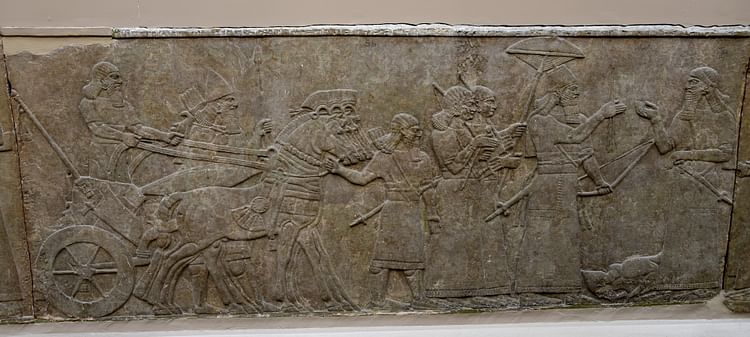
Having established himself as a monarch not to be trifled with, he marched on Lebanon. One of his inscriptions regarding this campaign from Kalhu reads:
At that time, I seized the entire extent of the Lebanon mountain and reached the Great Sea of the Amurru country. I cleaned my weapons in the deep sea and performed sheep offerings to all the gods. The tribute of the seacoast – from the inhabitants of Tyre, Sidon, Byblos, Mahallata, Maiza, Kaiza, Amurru, and of Arvad, which is an island in the sea – consisting of gold, silver, tin, copper, copper containers, linen garments with multicolored trimmings, large and small monkeys, ebony, boxwood, ivory from walrus tusk, this was their tribute I received and they embraced my feet. (Pritchard, 188)
He had now secured his empire, enlarged it, and established himself as a warrior-king worthy of his lineage and so turned his attention to building projects. He renovated the capital city of Ashur and the important trade center of Nineveh and continued on from there to rebuild or renovate many others. In renovating Ashur, scholars suggest, he may have become disenchanted with the city as capital as there was little room left to make his mark on and this could have inspired him to create a completely new capital city. It should be noted, however, that this is modern-day speculation; no reason is ever given by the king for the grand vision of Kalhu.
The New Capital
Kalhu was located on a prosperous trade route between Ashur and Nineveh and had been central to Assyrian trade since the 1st millennium BCE. It had been built on the site of an earlier trade center under the reign of Shalmaneser I (1274-1245 BCE) but little care had gone into its upkeep and, by the time of Ashurnasirpal II, it had become run down and dilapidated.
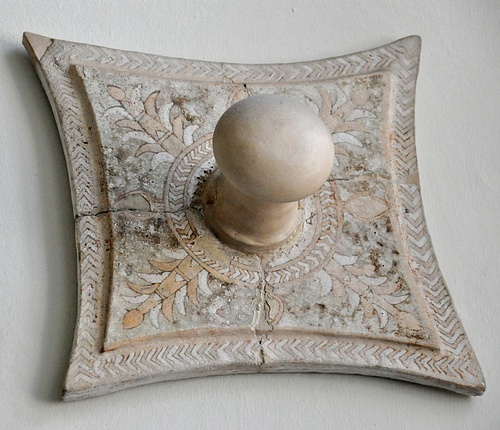
Ashurnasirpal II decreed a whole new city be constructed on the earlier site in his honor and for his use, elevating himself above his predecessors with a magnificent capital so glorious it could not be compared with any other. Kalhu would cover 360 hectares (890 acres) and would be surrounded by a wall 4.6 miles long (7.5 kilometers). One of his inscriptions reads:
The former city of [Kalhu], which Shalmaneser, king of Assyria, a prince who preceded me, had built, that city had fallen into decay and lay in ruins, it was turned into a mound and a ruin heap. That city I built anew. I laid out orchards round about it, fruit and wine I offered unto Assur [the god], my lord. I dug down to the water level. I built the wall thereof; from its foundation unto its top I built and completed it. (Bauer, 336-337)
Ashurnasirpal II wanted to make sure that his city rivaled all others, not only those built before him but any which might come later. Scholar Susan Wise Bauer describes the city, in part:
Caleh, from now on, would be the center of his government; Assur itself became a purely ceremonial city. In Caleh he built not only office buildings, but a palace decorated with reliefs of the warriors and kings who had surrendered to him; at the doorways to the hall where he received tribute, he set up guardian statues, enormous winged bulls with human heads, their faces an idealized portrait of Ashurnasirpal himself. (337)
Further, Ashurnasirpal II established a zoo (considered the first of its kind) featuring exotic animals and botanical gardens of magnificent foreign trees and flowers he had brought back from his military campaigns. When the city and palace were completed, he had the palace walls decorated with ornate reliefs, accompanied by inscriptions, which lined the walls of the corridors and rooms. When the final touches were done to his satisfaction, Ashurnasirpal II threw his grand celebration and invited everyone to come see what he had accomplished.
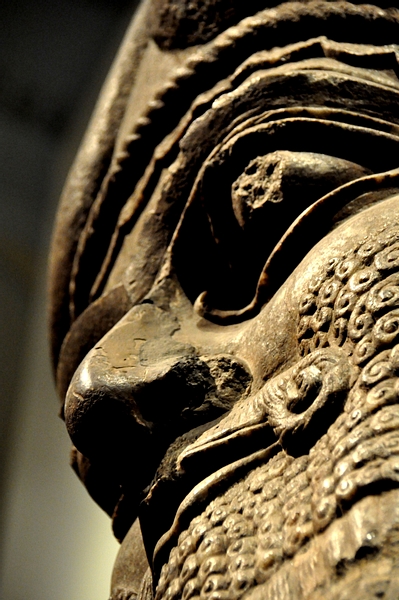
Justification for the City
Like King Tiglath Pileser I before him (r. 1115-1076 BCE), Ashurnasirpal II did not care if people hated him, so long as they feared and obeyed him. A public relations event such as the Kalhu festival would have been considered unnecessary by a monarch who had already gone to great lengths to make sure his name was synonymous with ultimate authority and even terror. It is most likely, then, that Ashurnasirpal II threw his party simply because he wanted to show off his new city, his gardens, zoo, and palace. Reasons for the actions of Assyrian kings are not often made clear in their inscriptions as scholar Van de Mieroop notes:
It seems safe to say that the building of new cities was a complex enterprise. If this conclusion is correct, we would expect the kings who undertook the work to elaborate on their activities in their building inscriptions. Yet, when we study these texts, we find a lack of information on certain aspects of the undertaking. First, the kings must have had a motivation for the building of these vast cities but, when we look at their records, no reason for the work is declared. Ashurnasirpal's justification for the work on Kalhu is merely a statement that the city built by his predecessor Shalmaneser had become dilapidated. (Ancient Mesopotamian City, 55)
In the same way that the kings felt no need to justify the building of their cities, Ashurnasirpal II seems to have felt no need to elaborate on his reasons behind throwing his party. In his inscriptions he writes:
When I consecrated the palace of Kalhu, 47,074 men and women, who were invited from every part of my land, 5000 dignitaries and envoys of the people of the lands Suhu, Hindanu, Patinu, Hatti, Tyre, Sidon, Gurgumu, Malidu, Hubushku, Gilsanu, Kummu, And Musasiru, 16,000 people from Kalhu, and 1500 palace officials, all of them – altogether 69,574 including those summoned from all the lands and the people of Kalhu – for ten days I gave them food, I gave them drink, I had them bathed, I had them anointed. Thus, I did honor to them and send them back to their lands in peace and joy. (Van de Mieroop, History of the Ancient Near East, 234)
Just as he offered no justification for the sack of Tela and the slaughter of its inhabitants, neither did he feel the need to give a reason for his party. The reason behind both of these events – and any like them – he seems to have considered self-evident: he was the great king of Assyria, justified by his god Assur, and no reason need be given aside from that.
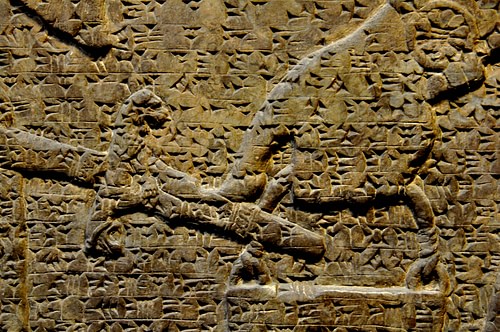
The Great Party
The menu from the celebration has been preserved; his Banquet Stele records that the feast included, but was not limited to:
- 1,000 oxen
- 1,000 domestic cattle and sheep
- 14,000 imported and fattened sheep
- 1,000 lambs
- 500 game birds
- 500 gazelles
- 10,000 fish
- 10,000 eggs
- 10,000 loaves of bread
- 10,000 measures of beer
- 10,000 containers of wine (Bauer, 337)
Ingredients, spices, and other edibles included sesame, grains, grapes, onions, garlic, honey, mustard, milk, nuts, cheese, olives, dates, ghee, and turnips. As Van de Mieroop writes, “This was a special banquet, and worthy of boasting” (Ancient Mesopotamian City, 155). Scholars continue to speculate, however, on why the king would throw such an elaborate festival for the people when he did not have to do so.
There is no reason given for the party and one is left to conclude that the king simply felt like hosting a grand event. Kalhu had been an old and well-resepected trading center which had fallen into ruin over the years; he had now rebuilt it and wanted his people – and as many others as would accept his invitation – to come and appreciate his efforts. His greatest pride was his new palace, and it seems a simple enough explanation that the king just wanted to show off what he had accomplished – off the battlefield – to as many admirers as he could gather.
This does not mean, of course, that he did not wish to impress upon them his military victories. Although it is thought that few of the guests would have been invited into the palace, the dignitaries who are mentioned in the inscription may well have been. There they would have seen the massive reliefs lining the walls depicting the king slaying lions with his bare hands and toppling city walls and massacring those who opposed him. Along with the pictures, they would have read the king's words, repeated over and over on the reliefs, in the so-called Standard Inscription. Scholar Jonathan Taylor describes the inscription in this passage:
The Standard Inscription is not an object in its own right, but rather a single, standardized cuneiform text written in Akkadian, which was carved out many times in celebration of Assurnasirpal's accomplishments. It ran to 22 lines of script altogether. The first five lines assert the king's credentials:
Palace of Assurnasirpal, vice-regent of Aššur, chosen one of the gods Enlil and Ninurta beloved of the gods Anu and Dagan destructive weapon of the great gods, strong king, king of the universe, king of Assyria, son of Tukulti-Ninurta, great king, strong king, king of the universe, king of Assyria, son of Adad-Nirari great king, strong king, king of the universe, king of Assyria; valiant man who acts with the support of Aššur, his lord, and has no rival among the princes of the four quarters, marvelous shepherd, fearless in battle, unopposable mighty floodtide, king who subdues those insubordinate to him, he who rules all peoples, strong male who treads upon the necks of his foes, trampler of all enemies, he who smashes the forces of the rebellious, king who acts with the support of the great gods, his lords, and has conquered all lands, gained dominion over all the highlands and received their tribute, capturer of hostages, he who is victorious over all countries...
The next nine lines report the extent of his victories, stretching from Mount Lebanon in the west to Armenia in the east, and encroaching south into Babylonian territory. The last eight lines tell how he rebuilt the city of Kalhu (and made it his capital) and settled there people from his newly conquered territories. He built a great palace, decorated with the finest woods and metals, and stone statues of the beasts of the mountains and the seas; then he filled it with booty. (3)
The dignitaries would no doubt have been impressed by the size and scope of the new palace and the city but, perhaps equally or even more so, by the images and inscriptions of the feats of the king – and the unspoken threat of what would happen to them if they decided to oppose the power of Assyria. This, of course, is only a theory proposed by historians (although it seems in keeping with Ashurnasirpal II's personality), and it could be that the reliefs should simply be taken at face value: as a record of the king's personal and professional triumphs preserved for posterity on the walls of his palace but not necessarily seen by the guests at his party.

Conclusion
Ashurnasirpal II reigned for 25 years and continued to indulge his penchant for building projects; renovating, enlarging, and beautifying many cities throughout his empire. He also continued to care for his people in other ways by securing the borders of the empire, establishing food depots and water reserves for times of crisis, and boosting the economy through fourteen successful military campaigns. There is no evidence to suggest, however, that he ever threw another party on the scale of the Kalhu celebration of 879 BCE.
As there is no other record of the Kalhu festival other than the king's inscriptions, it is not known how well the guests enjoyed themselves or whether any dignitaries were cowed by palace reliefs and the Standard Inscription. All that is known is that, once upon a time, King Ashurnasirpal II of Assyria hosted the greatest party ever thrown and, through his account of it inscribed on his palace walls, wanted to make sure that future generations would know of it.
